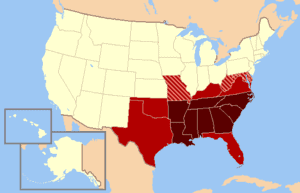Between 1965 and 2004, the distribution of states with the highest mortality changed dramatically.
In 1965, the states with the highest mortality (Rhode Island, Alaska, Delaware, Pennsylvania, and New Hampshire) were spread across geographic regions. By 2004, however, the states with the highest mortality were geographically contiguous, and located in the south. The Central South (Alabama, Kentucky, Mississippi, and Tennessee) had the highest mortality rates in the United States. A new study by Andrew Fenelon of Brown University explores the possibility that smoking behaviors account for this situation.
Fenelon used US mortality data from vital statistics on cause of death for the period 1965-2004 and, for the purposes of this study, considered lung cancer deaths to be indicative of cigarette smoking. In the US, more than 90 percent of lung cancer deaths among men and more than 80 percent among women result from smoking. Although the prevalence of smoking declined in all states in that time period, southern states, particularly Kentucky, have maintained overall high levels of smoking.
 Fenelon found that in the Central South, mortality attributable to smoking peaked later than in other regions and at a significantly higher death rate, indicating a greater and more persistent burden of smoking. By 2004, the gap in mortality attributable to smoking between the Central Southern states and states in other regions was exceptionally large: among men, smoking explained as much as 75 percent of the difference between the Central South and other US regions.
Fenelon found that in the Central South, mortality attributable to smoking peaked later than in other regions and at a significantly higher death rate, indicating a greater and more persistent burden of smoking. By 2004, the gap in mortality attributable to smoking between the Central Southern states and states in other regions was exceptionally large: among men, smoking explained as much as 75 percent of the difference between the Central South and other US regions.
Laws and policies in the Central South do not strongly discourage smoking. There are currently 10 states with no statewide ban on smoking (for example, in workplaces or restaurants); nearly all of these states are in the South. State taxes on tobacco products also remain low in the Central Southern states compared to other states with lower mortality from smoking. Studies have shown that smoking bans and tobacco taxes reduce the prevalence of smoking.
This study highlights geographic inequalities in health and mortality within the US and underscores the importance of narrowing these gaps as a public policy goal.



